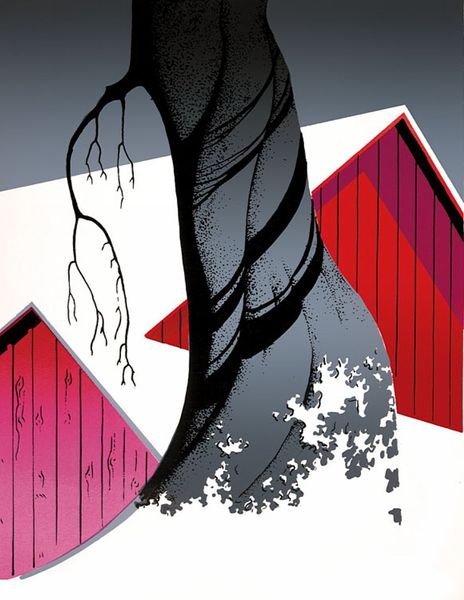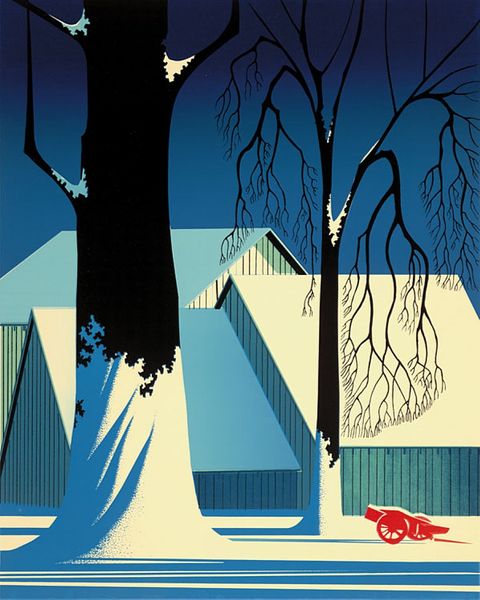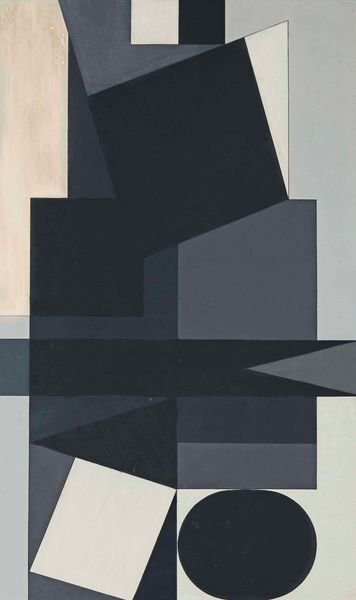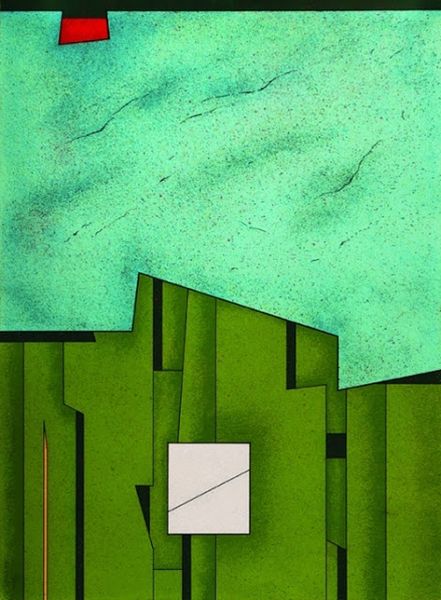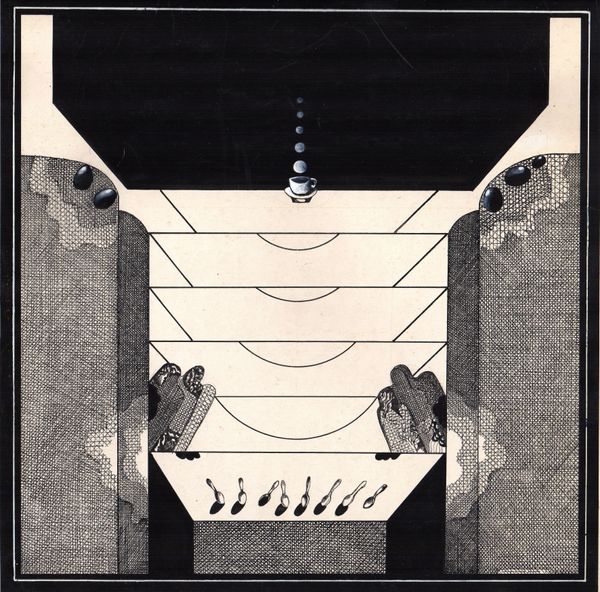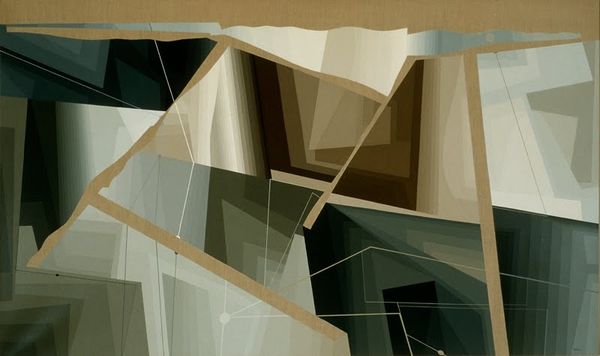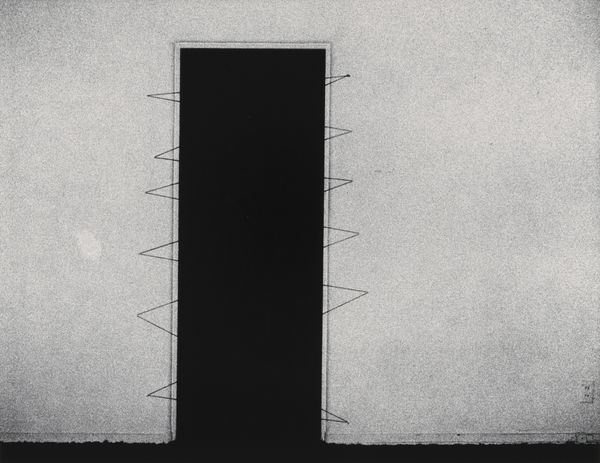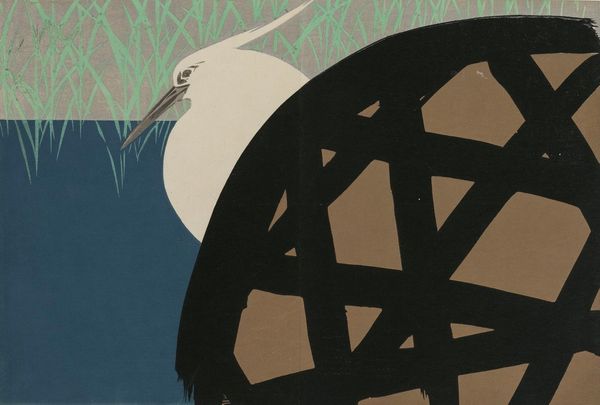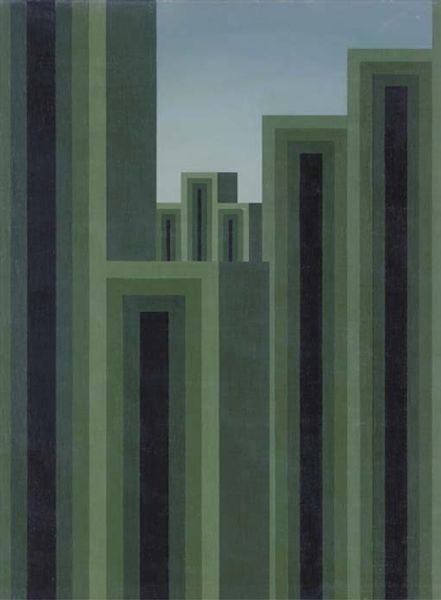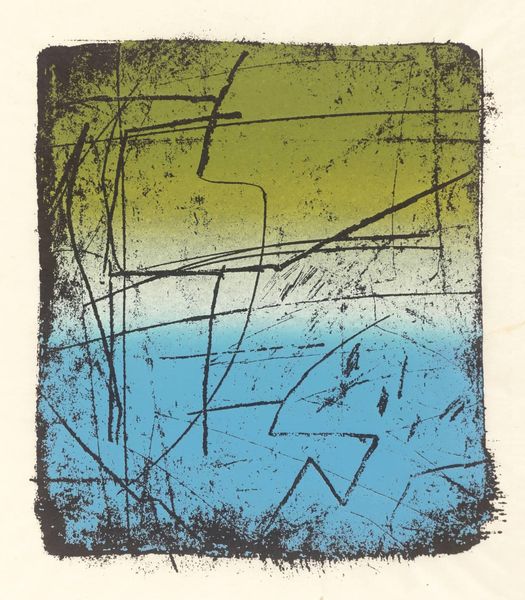
painting, acrylic-paint, architecture
#
painting
#
landscape
#
acrylic-paint
#
geometric
#
abstraction
#
line
#
architectural proposal
#
cityscape
#
architecture render
#
modernism
#
architecture
Copyright: Eyvind Earle,Fair Use
Curator: This is "Pearl" by Eyvind Earle, completed in 1983. He employed acrylic paint to create this evocative piece. What's your first take? Editor: Striking. Stark yet dreamlike. The geometry of the architecture is so sharply defined, yet the ethereal quality of the light softens the mood. There's a strong contrast between the constructed and the natural, the solid building versus the fragile trees. Curator: Absolutely. Earle had a signature style, honed over decades, where he distilled landscapes to their essence using flattened planes of color and sharp, elegant lines. You see that playing out here, too. His artistic journey involved commercial work for Disney, where he influenced the look of films like Sleeping Beauty, known for its stylized backgrounds. Editor: Ah, I can definitely see the Disney influence! This painting evokes the hyper-stylized storybook illustrations, like a dark fairy tale setting. Given the era in which Earle produced "Pearl," it seems he deliberately sought out architectural inspiration rooted in the modernist movement. The building almost appears as an imposing monument, a marker, perhaps celebrating the clean aesthetic values championed throughout the postwar period. It seems somewhat critical, though, the bare trees and dark shading adds an element of dystopian thought. Curator: Interesting perspective. There’s always a tension in modernist architecture between utopian ideals and the potential for coldness and alienation, themes artists explored throughout the 20th century and continue to engage today. And considering that the building dominates nature here, and not the reverse, what message can be derived? The pearl seems less a treasured jewel, but another brick in a quickly decaying society. Editor: Exactly! It's all connected. When we contextualize art within socio-historical frameworks, what stories emerge? Here, it speaks to power, control, and the impact that architecture can impose upon inhabitants of a location, or a visitor. Even if its form appears refined, perhaps we must think about how it can subtly exert pressure or define who occupies it, or for what. Curator: Thanks for adding so many fascinating points. I see this piece in a new light now. Editor: Always a pleasure when engaging with the history of art allows us to learn and contemplate, instead of seeing artworks as static objects of admiration.
Comments
No comments
Be the first to comment and join the conversation on the ultimate creative platform.
